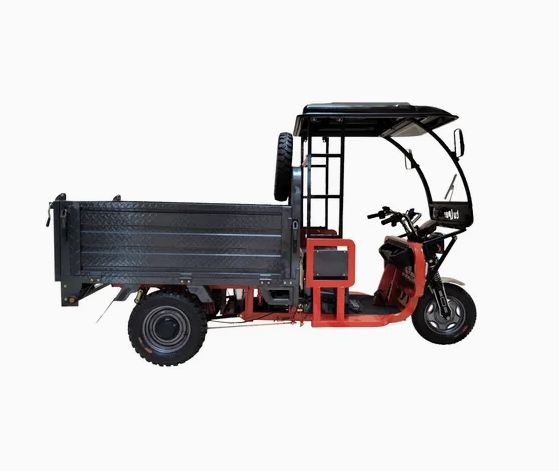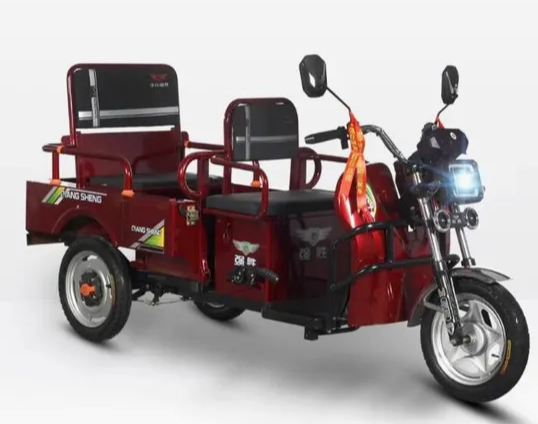Challenges faced by the Global Electric Cargo Three Wheeler Market
News 2022-06-14
What are the challenges faced by the Global Electric Cargo Three Wheeler Market?
The growth of the global electric cargo three wheeler market may be hindered by factors such as limited driving range, high initial cost compared to traditional fuel-powered vehicles, and the availability of charging infrastructure.

The global electric cargo three-wheeler market stands at a critical juncture, where environmental demands. Let’s examine its challenges through tangible scenarios. In the narrow streets of Mumbai, a delivery driver anxiously watches his vehicle’s battery indicator while waiting in line at one of the city’s few operational charging stations. This scene encapsulates the infrastructure paradox facing emerging markets – while governments promote EV adoption, the charging network remains fragmented. Data shows that India’s current charging station-to-vehicle ratio stands at 1:150, creating operational bottlenecks that erase the theoretical efficiency advantages of electric vehicles.
Crossing continents to London, a logistics company CFO grimaces while reviewing procurement budgets. The upfront cost of electric three-wheelers remains 35-40% higher than conventional equivalents, with battery replacement costs looming like financial timebombs. This pricing disparity persists despite a 12% annual decrease in battery costs since 2020, revealing the complex economics of fleet electrification. European manufacturers face their own dilemma – stringent safety certifications requiring expensive reinforced chassis designs, ironically increasing vehicle weight and reducing payload capacity by an average of 15%.
The technological frontier presents its own hurdles. During Beijing’s harsh winter, numerous electric cargo three-wheelers lie dormant as their lithium-ion batteries struggle below -10°C. While manufacturers tout 80km ranges, real-world testing shows 30-40% capacity reduction when carrying full loads in urban stop-and-go traffic. A Shenzhen-based delivery company reported 23% vehicle downtime due to battery management system failures in Q2 2023, highlighting reliability concerns.
Market dynamics reveal another layer of complexity. China in 2022 created a “demand cliff,” with Q3 orders plunging 42% year-over-year. This shockwave exposed the industry’s overreliance on government incentives. Meanwhile, Southeast Asian markets present a regulatory patchwork – Thailand’s 10% EV excise tax incentive contrasts with Indonesia’s lack of clear charging infrastructure standards, creating market entry barriers.
The supply chain conundrum manifests in multiple dimensions. A single electric three-wheeler contains over 2,000 components from 120+ suppliers, with battery raw material prices showing volatile fluctuations. Cobalt prices swung 60% in 2022 alone, forcing manufacturers into complex futures hedging strategies extended component lead times – some specialized electric motors currently have 26-week delivery backlogs.
Consumer perception remains an invisible barrier. In a Nairobi market survey, 68% of small business owners expressed range anxiety, while 54% doubted maintenance cost savings. These concerns persist despite empirical data showing 40% lower operating costs over five years. The industry struggles to communicate value propositions effectively across diverse literacy levels and cultural contexts.
Workforce development emerges as a silent crisis. India’s Automotive Skills Development Council reports a 65% gap in qualified EV technicians. This skills shortage leads to dangerous improvisations – in Lagos, 30% of electric three-wheeler repairs involve uncertified technicians using incompatible warranties and compromising safety.
Environmental compliance brings regulatory whiplash. The EU’s new Battery Passport regulation, requiring full supply chain transparency by 2026, would add €1,200-1,800 per vehicle in compliance costs. Meanwhile, California’s Advanced Clean Fleets regulation mandates 100% zero-emission commercial vehicles by 2035, compressing adoption timelines beyond current technological readiness.
The financing landscape presents its own obstacle course. Microfinance institutions in Bangladesh charge 18-22% interest for EV loans compared to 12-14% for conventional vehicles, reflecting perceived risks. Insurance premiums tell a similar story – Kenyan insurers price EV policies 25-30% higher due to repair cost uncertainties electric three-wheelers.
Yet within these challenges lie innovation pathways. Bengaluru startups are piloting swappable battery networks using standardized containers. German engineers have developed cold-weather battery packs with integrated graphene heating layers. Chinese manufacturers are experimenting with sodium-ion alternatives to lithium batteries. The market’s evolution resembles a high-stakes chess game where solving one problem often creates new opportunities. As the industry navigates this complex terrain, its ultimate success will depend on converting technological potential into practical, economically viable solutions that address real-world operational needs.



